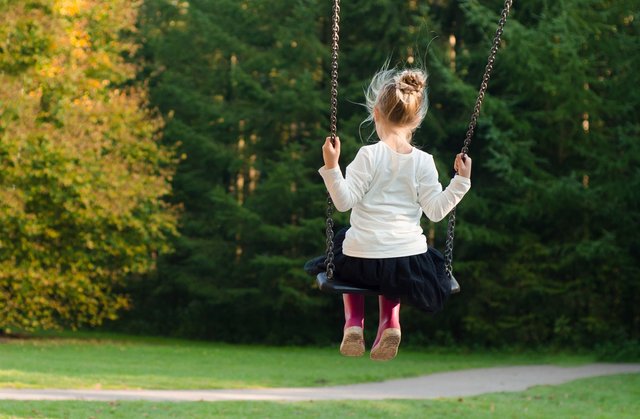They feed a neurobiological reaction in our brain that supports cooperation, mutual care and intimacy, increase the ability to empathize, or to identify with the emotional experience of the other: that's why gestures of affection and intimacy are good for health.
Feed a neurobiological reaction in our brain that supports cooperation, mutual care and intimacy, increase the ability to empathize, or to identify with the emotional experience of the other: that's why gestures of affection and intimacy are good for health
The context
The world today is a very competitive environment, in which one risks seeing everything as a challenge without allies, even in one's own team. This is also the result of a social drift towards a self-centered dimension, in which "I count, I decide, I am worth"; where respect for others seems to no longer be a value and an essential social rule of being together.
These social trends feed enemies that today are stress, low self-esteem, the difficulties of interaction, first of all in the couple.
Recovering time and the size of pampering is very important: we must rediscover pleasure and, in an adaptive dimension, utilitarianism, spiritual and physical sharing. However, the cultural and economic crisis we are experiencing is bringing old values to the fore and people rediscover the pleasure and naturalness of cooperation and community life.
Stability is once again a value.
Among the social behaviors that support stability, sense of belonging and sharing, cuddling and, in a broader sense, all the forms of physical and emotional care of the other, are a necessary prerequisite.
Benefits of pampering in our society
Sharing and relying on the other is the cornerstone of a specific strategy of coping, or coping with stress. Self-esteem is a variable that often depends on feeling important, for others, well-liked, cared for and protected, in relationships that we live as stable and reliable. Cuddling improves our ability to trust ourselves.
For the physiological well-being of the couple, space and time for pampering are essential.
Cuddles feed a neurobiological reaction in our brain that supports cooperation, mutual care and intimacy. Giving space to physical demonstrations of affection, sharing and emotional closeness, as through embraces and cuddles, mentally predisposes us, one could say neurobiological, to find understanding and empathize with each other.
We live in a society in which intimacy is often made of physical sex, testosterone, rather than a sublimation of the couple. Being together in the couple relationship presupposes a constant work of "fine tuning" or tuning on the emotional frequency of the other, which is anything but obvious and simple. Cuddles and hugs promote these cognitive processes on a mental level.
Men look differently for cuddles than women for different reasons. Women see in the cuddle the highest expression of love, reassurance, and attention; women search for them by sentimental agreement and sharing. For the woman, the cuddle is, therefore, an important element of the relationship.
In the evolution of the homo genus we have maintained some neurobiological patterns: man has a need to say he is selfish to take refuge in the cuddle to modulate the perennial state of aggression that lives as "leader", dedicated to fighting activities to procure the survival of family: work conflicts, clashes, and rivalries. So for the man, the cuddle is rest, reassurance that comes from the stability of the relationship and peace. Then there is another form of pampering, say cuddle in a broad sense, which act on the neurobiological system of gratification.
They are the cuddles that we allow ourselves to gratify us: appetizing foods, a new purchase, a hot bath, a good ice cream, chocolate.
Surely today there are studies that correlate the consumption of chocolate and predisposition to depression. In the subjects more predisposed to the depression it is found a greater tendency to make use of chocolate. It is much more complex to understand what this correlation means.
Surely eating greedy things is a primary way to get gratification, so cuddle
But we must distinguish between food craving and emotional eating. When we are stressed, tired or simply we need to cuddle, take care of us a bit, as after an understanding and hard day's work, our body reacts normally, making us feel the most compelling need to eat some foods, such as chocolate, which triggers within our neuronal circuits a complex reaction that culminates in a deep sense of gratification and well-being. In this case, it is as if our body felt the need for these substances, as smokers sometimes feel a spasmodic need to smoke a cigarette. This spasmodic need in English is called craving.
The chocolate is a good tool for hedonistic gratification, just going through the satisfaction of the craving, but if used as a target or as the Emotional eating comfort food can worsen and maintain affective instability. In fact, in those cases in which the search for food-cuddle occurs due to the need to respond to anxiety, sadness or anger, perhaps not even fully focused, but simply marked "by a sense of emptiness in the stomach", the cuddle is not a good remedy for our needs: it satisfies us immediately but leaves a sense of fragility and disquiet vanished in the short term. In this case, it is better to try to make a square around the emotions, try to recognize them, analyze them and manage them, trying to ride them instead of undergoing them.
Neurobiology of cuddle
The embrace is a sign of trust in the other and at the same time of protection of the other: when the other embraces us even physically we rely on, we put ourselves in a state of vulnerability; even man sometimes needs to lower his guard and be able to feel embraced.
With the embrace "we enter the world of the other, go beyond what in semi-oral non-verbal communication, is called the zone of intimacy, the physical contact and the thirty centimeters of perimeter around the body. There are smells, temperature, breath, the heart that beats. This interaction exponentially increases the ability to empathize that is to identify with the emotional experience of the other while remaining oneself. We think of the embrace that sees players as football players after a goal: it is the maximum form of sharing and emotional synchronization.
The embrace has phylogenetically an adaptive meaning for survival: in front of the dreaded cold being close neighbors and hugging allows heating more effectively, saving energy in autonomous thermoregulation.
At a cognitive and neuroendocrine level, a hug, a caress, produce a very precise pattern of reactions.
Hormone and cuddle hormone is oxytocin. Many authors have now shown that oxytocin is the hormone that regulates the behaviors of the coalition than competitive aggressive: an increase in oxytocin produces mental behaviors and attitudes of openness, intimacy and collaboration with each other, supports the ability to empathize and increases the ability to trust and trust.
In fact, oxytocin reduces the activity of the amygdala and increases the activity of the ventromedial prefrontal cortex, which supports behaviors of attention, involvement, and concern for the other. On the contrary, social isolation produces, as documented by numerous studies, neurological and psychological effects: a tonic activation of the lymphatic system and an increase in the activation of the hypothalamic hypothesis adrenal axis, amplifying and exaggerating the physiological responses to stress; a reduction in the efficiency of the immune reaction, inflammatory and sleep disorders. The best cuddle that can antagonize the effects of loneliness is both sharing, not emotional eating, as one might hope.
Recent epidemiological investigations that have tried to achieve the level of happiness today have traced a level of serenity and greater optimism in those people who dedicate time and energy to sharing and active participation in community life.
Maternal instinct, cuddles and emotional growth of the child
In the first days and months of life, the baby mother interaction is an essentially physical matter. The World Health Organization recommends that after a natural birth, the mother has physical contact as soon as possible with the newborn. This improves numerous parameters of good health and puerperium, both in the mother and in the child. There is also initial evidence that skin-to-skin contact is desirable as soon as possible even after cesarean delivery.
The trees of the child's emotional system already allow him to search and identify his mother's gaze, to automatically respond to the smile. Numerous studies agree on the importance of physical interaction in the first months of life for an optimal growth of the emotional system, the sense of self-confidence, the ability to cope with stress and for the same expression of genes and receptors that coordinate the responses physiological stress.
For example, some studies suggest that children who have largely experienced co-sleeping in the first six months of life have a better ability to recover from stress induced by the strange situation, the experimental condition with which around 12-18 months of life is investigated emotional sensitivity in the presence of strangers. To document it was the pattern of salivary cortisol reduction in the hours after experimentation.








That they are!
Posted using Partiko Android
Downvoting a post can decrease pending rewards and make it less visible. Common reasons:
Submit